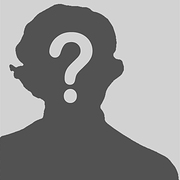
Donald Harden
Auteur van The Phoenicians
Over de Auteur
Werken van Donald Harden
Glass of the Caesars. [cat. exp., Corning Museum of Glass, Corning; The British Museum, London; Romisch - Germanisches… (1987) 41 exemplaren
Glass of the Caesars Catalog of Exhibition Organized By the Corning Museum, the British Museum and the… (1987) 2 exemplaren
Os fenícios 1 exemplaar
Ancient glass 1 exemplaar
Bibliography for students 1 exemplaar
Tagged
Algemene kennis
- Officiële naam
- Harden, Donald Benjamin
- Geslacht
- male
Leden
Besprekingen
Misschien vindt je deze ook leuk
Gerelateerde auteurs
Statistieken
- Werken
- 15
- Leden
- 152
- Populariteit
- #137,198
- Waardering
- 4.5
- Besprekingen
- 4
- ISBNs
- 12
- Talen
- 4










This book has separate chapters on the main areas of interest of Phoenician culture, including their origins and geography, their expansion across the Mediterranean, Carthage, wars with the Greeks, religion, language, towns, society, industry, trade, and art. Together these give a good idea of the development of Phoenicians culture compared to other contemporary civilisations. For example Phoenician art borrowed from Mesopotamia, Egypt, and Greece, while Phoenicia in turn developed new types of ship which then were copied by her rival sea powers. They were also among the first civilisations to use coins. There are good black and white illustrations showing Phoenician artifacts and structures including pottery, ornate tombs, jewellery, and sculpture.
Overall this is a readable book that presents a good range of information on an interesting and historically important people.… (meer)